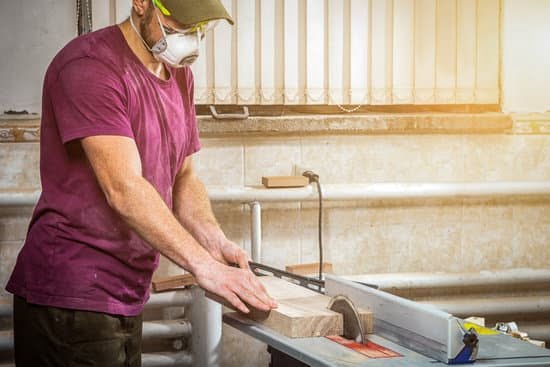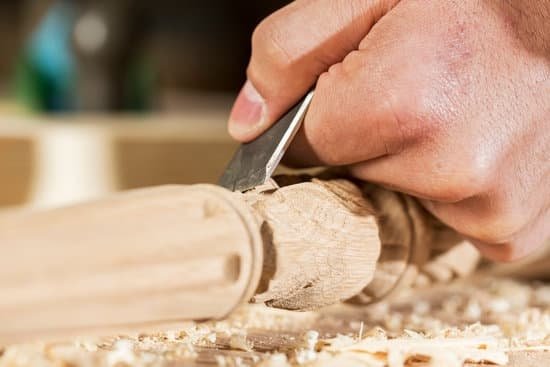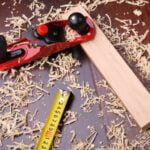Are you wondering what a woodworking shop lathe is and how it can enhance your woodturning projects? Woodworking shop lathes are versatile tools that can be found in many professional workshops and personal woodworking spaces. In this article, we will explore the basics of a woodworking shop lathe, including its history, types, components, functionality, and importance in woodworking projects.
Woodworking shop lathes have been used for centuries to create cylindrical objects such as table legs, bowls, and spindles. From ancient hand-powered lathes to modern electrically-driven ones, these tools have evolved to meet the needs of woodworkers across generations. Understanding the history of woodworking lathes can provide valuable insights into their development and application in today’s woodturning practices.
We will also delve into the different types of woodworking shop lathes available in the market, including benchtop, floor-standing, and mini lathes. Each type has its own unique features and benefits, catering to various woodworking needs and spatial constraints. Knowing the differences between these types can help you make an informed decision when choosing a lathe for your woodturning projects.
The History of Woodworking Lathes
During the Industrial Revolution, woodworking lathes became an integral part of manufacturing processes, allowing for mass production of turned wood products such as furniture components and decorative items. The invention of the electric motor further revolutionized the woodworking industry, making lathes more efficient and accessible to a wider range of woodworkers.
In modern times, woodworking shop lathes come in various types and sizes to accommodate different needs and preferences. From traditional floor-standing lathes to compact benchtop models and even mini lathes for small-scale projects, woodworkers now have a wide array of options to choose from when it comes to selecting the right lathe for their workshops.
| Wood Lathe Type | Description |
|---|---|
| Benchtop Lathe | Compact and portable, suitable for small workshops or hobbyists |
| Floor-Standing Lathe | Sturdy and powerful, ideal for professional woodturners and large-scale projects |
| Mini Lathe | Small in size, designed for fine detail work and delicate turning projects |
Understanding the evolution of woodworking lathes provides valuable insight into the versatility and importance of this tool in modern woodworking practices. Woodworkers today continue to rely on lathes to create intricate designs, turn spindles, shape bowls, and produce custom wooden components for various applications. The advancements in lathe technology have undoubtedly transformed the way woodworkers approach their craft, making it easier than ever to achieve precision and quality in their projects.
Types of Woodworking Shop Lathes
Woodworking lathes come in various types, each designed to suit different woodworking needs and shop spaces. The three main types of woodworking shop lathes are benchtop lathes, floor-standing lathes, and mini lathes.
Benchtop Lathes
Benchtop lathes are compact and portable, making them suitable for smaller workshops or for woodworkers who need to move their equipment around. These lathes are designed to be placed on a workbench or a sturdy table, allowing woodworkers to create smaller projects such as pens, small bowls, and spindles. Benchtop lathes are often the go-to choice for beginners due to their ease of use and maneuverability.
Floor-Standing Lathes
On the other end of the spectrum are floor-standing lathes, which are larger and more powerful than benchtop lathes. These lathes are designed for professional woodworkers or enthusiasts who work on larger projects such as furniture legs, large bowls, and decorative pieces. Floor-standing lathes provide stability and precision, making them ideal for working with heavier and larger pieces of wood.
Mini Lathes
For woodworkers with limited space or those interested in turning small items like pens or ornaments, mini lathes are a popular choice. These compact lathes offer versatility in a small package, allowing woodworkers to create intricate details on their projects without taking up much space in their workshop.
When choosing the right type of woodworking shop lathe for your needs, consider the size of your workshop, the scale of projects you plan to undertake, and your level of experience with lathe work. Each type has its own advantages and limitations, so it’s important to assess your specific requirements before making a decision.
Regardless of the type you choose, a woodworking shop lathe is an essential tool for any woodworking enthusiast looking to add dimension and creativity to their projects.
Components of a Woodworking Shop Lathe
A woodworking shop lathe is an essential tool for any woodworker, allowing them to shape and create intricate designs in wood. Understanding the components of a woodworking shop lathe is crucial for using it effectively and safely. The main components of a woodworking shop lathe include the bed, headstock, tailstock, and tool rest.
The bed of a woodworking shop lathe is the horizontal base on which the other components are mounted. It provides stability and support for the entire machine. The length of the bed determines the maximum length of wood that can be turned on the lathe. Additionally, some lathes have adjustable beds to accommodate different workpiece lengths.
The headstock of a woodworking shop lathe holds the motor and spindle, which rotate the workpiece. It also contains various speed settings to control the rotation of the wood. The headstock can often be swiveled or adjusted to allow for turning large or irregularly shaped pieces.
The tailstock is located at the opposite end of the lathe from the headstock and provides support for longer workpieces. It can be adjusted along the bed to accommodate different lengths of wood. Additionally, it often includes a mechanism for securing the workpiece in place while it is being turned.
The tool rest is an important component that supports cutting tools as they shape and trim the spinning wood. It can be adjusted in height and distance from the workpiece to provide optimal support and control for cutting operations.
Understanding these components will help woodworkers choose the right woodworking shop lathe for their specific needs and use it safely and effectively in their projects.
How a Woodworking Shop Lathe Works
A woodworking shop lathe is a versatile and essential tool for any woodworker, allowing them to turn, shape, and create intricate designs on wood. Understanding how a woodworking shop lathe works is crucial for harnessing its full potential in woodworking projects.
Turning
One of the primary functions of a woodworking shop lathe is turning. This process involves rotating a piece of wood on the lathe while using various cutting tools to shape and form the wood into different profiles such as cylinders, cones, and more. Woodturning allows woodworkers to create items such as table legs, chair spindles, and decorative bowls with precision and ease.
Shaping
In addition to turning, a woodworking shop lathe also enables woodworkers to shape the wood in various ways. This includes creating smooth curves, beads, coves, and other complex shapes that add visual interest to finished wood pieces. By adjusting the speed of the lathe and using different cutting tools, woodworkers can achieve unique shapes and contours on their projects.
Creating Intricate Designs
Woodworking shop lathes are also capable of producing intricate designs with the use of specialty accessories such as chucks, faceplates, and steady rests. These accessories allow woodworkers to hold irregularly shaped pieces securely on the lathe while they work on creating detailed carvings or engravings onto the surface of the wood. The ability to produce intricate designs adds an artistic element to woodworking projects and allows for endless creative possibilities.
Understanding how a woodworking shop lathe works in terms of turning, shaping, and creating intricate designs is essential for any woodworker looking to enhance their skills and expand their capabilities in working with wood. Whether it’s for functional items or decorative pieces, a woodworking shop lathe provides endless opportunities for creativity and craftsmanship in woodworking projects.
The Importance of a Woodworking Shop Lathe in a Woodworker’s Toolkit
Woodworking lathes have been an essential tool in woodshops for centuries, and their importance in a woodworker’s toolkit cannot be overstated. Here are some reasons why a woodworking shop lathe is indispensable for anyone working with wood:
- Turning capabilities: A woodworking shop lathe allows woodworkers to turn symmetrical or asymmetrical shapes on a piece of wood, creating intricate designs such as table legs, candlesticks, and bowls.
- Shaping and detailing: With the right tools and techniques, a lathe can be used to shape and detail wood, allowing for precise and artistic touches in woodworking projects.
- Versatility: Woodworking lathes come in various types including benchtop, floor-standing, and mini lathes, providing options for woodworkers with different space limitations and project requirements.
Woodworking shop lathes are equipped with several key components that allow them to fulfill their diverse functions:
- Bed: The bed of the lathe provides support for the headstock, tailstock, and tool rest. It also determines the maximum length of material that can be turned on the lathe.
- Headstock: This component houses the motor and allows the workpiece to be mounted securely for turning.
- Tailstock: The tailstock can be moved along the bed to support the other end of longer workpieces, ensuring stability during turning.
- Tool rest: The tool rest is used to support tools while shaping or detailing the workpiece. It can be adjusted and removed as needed for different turning tasks.
In sum, a woodworking shop lathe is a versatile and essential tool that enables woodworkers to unleash their creativity by turning, shaping, and detailing wood into beautiful and functional pieces. Whether it’s a small benchtop lathe for hobbyists or a powerful floor-standing lathe for professional woodworkers, having this tool in your workshop can elevate your woodworking projects to new levels of craftsmanship.
Tips for Choosing the Right Woodworking Shop Lathe for Your Specific Needs
When it comes to choosing the right woodworking shop lathe for your specific needs, there are several factors to consider. Whether you are a beginner or an experienced woodworker, selecting the right lathe can make a significant difference in the quality and precision of your work. Here are some tips to help you make an informed decision:
- Consider the size: Woodworking shop lathes come in various sizes, from mini lathes for small projects to large floor-standing lathes for bigger pieces. It is essential to consider the size of the projects you typically work on and choose a lathe that can accommodate them.
- Power and speed options: Different woodworking shop lathes offer varying levels of power and speed options. Depending on the type of wood and the intricacy of your designs, you will need to choose a lathe with the appropriate horsepower and variable speed settings.
- Quality of construction: Look for a woodworking shop lathe made from sturdy materials such as cast iron or heavy-duty steel. The overall construction of the lathe will impact its stability, durability, and vibration resistance during operation.
In addition to these tips, it is essential to consider additional features such as adjustable tool rests, easy-to-use controls, and compatibility with accessories such as chucks and faceplates. By carefully evaluating these factors, you can choose a woodworking shop lathe that meets your specific needs and enhances your woodworking experience. Remember to always prioritize safety when operating any woodworking machinery.
The Choice of Woodworking Shop Lathe Requires Careful Consideration of Various
Factors Such as Size, Power Options, Quality of Construction, Additional
features, and safety features. With these tips in mind.
Woodworkers Can Select a Lathe That Best Suits Their Specific Needs And
elevates their craftsmanship in working with wood.
Safety Precautions and Best Practices When Using a Woodworking Shop Lathe
When operating a woodworking shop lathe, it is crucial to prioritize safety at all times. The high-speed rotation of the lathe can pose serious risks if not used properly, so it is essential to follow these safety precautions and best practices to ensure a safe working environment.
First and foremost, always wear appropriate personal protective equipment (PPE) when using a woodworking shop lathe. This includes safety goggles to protect your eyes from flying wood chips or debris, as well as ear protection to reduce the noise level generated by the machine. Additionally, wearing snug-fitting clothing and avoiding loose accessories or jewelry can help prevent accidents.
Another important safety precaution is to ensure that the lathe is securely anchored to the ground or workbench to prevent any movement during operation. This stability is crucial for maintaining control over the workpiece and reducing the risk of unexpected movement or vibration. It is also recommended to keep the work area clean and free of clutter to avoid tripping hazards and maintain clear visibility while operating the lathe.
In terms of best practices, always familiarize yourself with the specific operational guidelines outlined in the lathe’s user manual before use. This includes understanding proper tool rest positioning, adjusting speed settings according to the type of wood being worked on, and using sharp tools that are in good condition. Proper tool handling and technique are also essential for smooth and safe operation.
Conclusion
In conclusion, a woodworking shop lathe is a versatile and valuable tool that has been used for centuries to create intricate designs in wood. From ancient times to modern day, woodworking lathes have played a crucial role in shaping and turning wood into beautiful and functional pieces of art. Whether it’s a benchtop, floor-standing, or mini lathe, each type offers unique features and capabilities that cater to the specific needs of woodworkers.
The components of a woodworking shop lathe, including the bed, headstock, tailstock, and tool rest, work together seamlessly to provide woodworkers with the ability to turn and shape wood with precision and accuracy. This tool is essential for anyone looking to take their woodworking projects to the next level. Whether you are a hobbyist or professional woodworker, having the right lathe in your workshop can make all the difference in the quality of your finished pieces.
When choosing a woodworking shop lathe, it is important to consider your specific needs and preferences. Considering factors such as size, power, speed control, and accessories will help you find the perfect lathe for your projects.
Additionally, it is crucial to always follow safety precautions and best practices when using a woodworking shop lathe to prevent accidents or injuries. Overall, the woodworking shop lathe remains an indispensable tool for any woodworking enthusiast looking to create stunning and intricate designs in wood.
Frequently Asked Questions
What Is a Shop Lathe?
A shop lathe is a machine tool used for shaping and cutting various materials, such as wood or metal. It rotates the workpiece on its axis while various cutting tools are applied to shape it.
Which Lathe Is Used for Woodworking?
The lathe used for woodworking is called a wood lathe. This type of lathe is specifically designed for shaping wood by rotating it while a sharp cutting tool is applied to carve and create symmetrical shapes.
What Is the Difference Between a Lathe and a Wood Lathe?
The main difference between a lathe and a wood lathe lies in their intended use. While both machines rotate the workpiece to be shaped, a wood lathe is specifically designed with features and accessories tailored to woodworking tasks, such as carving and turning wood.
Meanwhile, a standard lathe may be more versatile for working with various materials like metal or plastic.

Hi everyone! I’m a woodworker and blogger, and this is my woodworking blog. In my blog, I share tips and tricks for woodworkers of all skill levels, as well as project ideas that you can try yourself.





